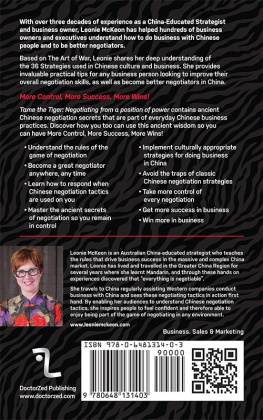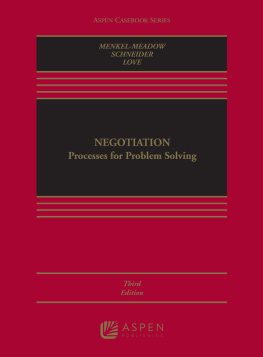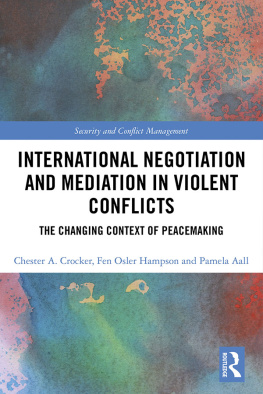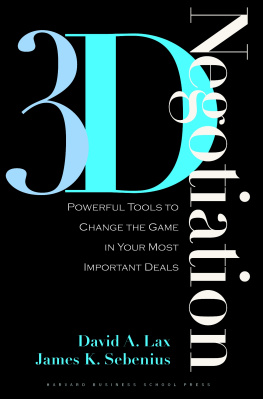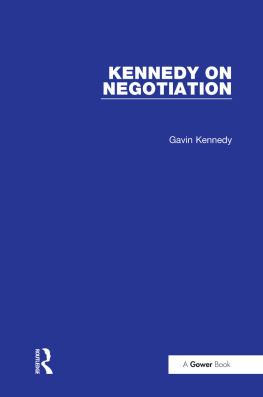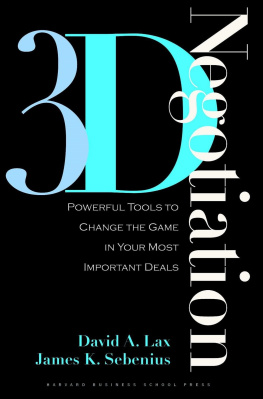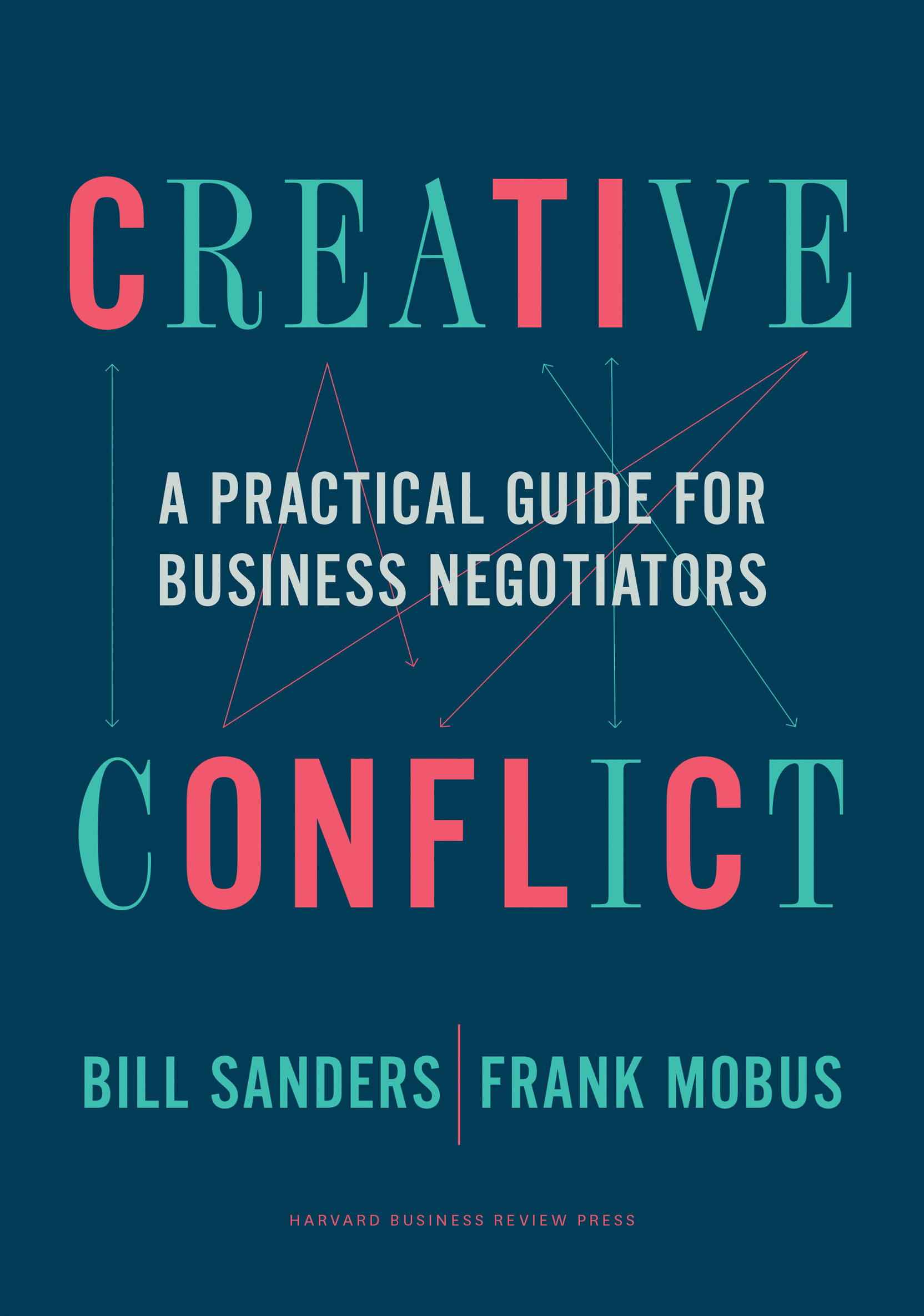HBR Press Quantity Sales Discounts
Harvard Business Review Press titles are available at significant quantity discounts when purchased in bulk for client gifts, sales promotions, and premiums. Special editions, including books with corporate logos, customized covers, and letters from the company or CEO printed in the front matter, as well as excerpts of existing books, can also be created in large quantities for special needs.
For details and discount information for both print and
ebook formats, contact ,
tel. 800-988-0886, or www.hbr.org/bulksales.
Copyright 2021 Bill Sanders and Frank Mobus
All rights reserved
No part of this publication may be reproduced, stored in or introduced into a retrieval system, or transmitted, in any form, or by any means (electronic, mechanical, photocopying, recording, or otherwise), without the prior permission of the publisher. Requests for permission should be directed to , or mailed to Permissions, Harvard Business School Publishing, 60 Harvard Way, Boston, Massachusetts 02163.
The web addresses referenced in this book were live and correct at the time of the books publication but may be subject to change.
Library of Congress Cataloging-in-Publication Data
Names: Sanders, Bill (William R.), author. | Mobus, Frank (Business consultant), author.
Title: Creative conflict : a practical guide for business negotiators / Bill Sanders, Frank Mobus.
Description: Boston, MA : Harvard Business Review Press, [2021] | Includes index.
Identifiers: LCCN 2020052658 (print) | LCCN 2020052659 (ebook) | ISBN 9781633699496 (hardcover) | ISBN 9781633699502 (ebook)
Subjects: LCSH: Negotiation in business. | Success in business. | Creative ability in business.
Classification: LCC HD58.6 .S27 2021 (print) | LCC HD58.6 (ebook) | DDC 658.4/052dc23
LC record available at https://lccn.loc.gov/2020052658
LC ebook record available at https://lccn.loc.gov/2020052659
ISBN: 978-1-63369-949-6
eISBN: 978-1-63369-950-2
For Barbara and Nina Mobus, Franks light and inspiration
CONTENTS
PREFACE
Frank Mobuss Fundamental Insight
Some thirty years ago, a young Frank Mobus found himself on a panel with the venerable W. Edwards Deming, the management guru who inspired the postWorld War II Japanese economic miracle. Deming transformed modern industry by solving a riddle: How does a company cut costs without compromising quality? The answerthe brainstorm that vaulted Toyota and Honda past GM and Fordwas to collaborate with the firms Tier 1 suppliers, to work together to improve design, tooling, engineering, and so on down the line.
Deming frowned on mechanically awarding contracts to the lowest bidder. As he saw it, the art of procurement was to ferret out efficiencies and minimize total cost. His ideal was a quasi-partnership between buyers and trusted vendors, where everything was sharedeven profits. Though Deming was best known for his systems for quality control and continuous improvement, his method could be distilled into one word: teamwork.
Toward the end of the panel session, Frank asked the great man: How do two companies strike a balance between competition and cooperation?
The Lion of Tokyo glared at Frank and roared, Balance? Why the hell would you want balance? Just get rid of the competition! A win-win fundamentalist, he believed that companies with strong relationships could transcend negotiating altogether.
Deming was on to something important, but hed missed a crucial point. From the time we are born, our culture trains us to shy away from conflict. In business, arguments are typically seen as obstructive. Its human nature to covet applause, not debate. Out of fear of blowing up a meeting or a deal or a relationship, most of us soft-pedal discord as much as we can.
Yet consider:
John Lennon and Paul McCartney drove each other crazy. Their studio sessions were so tense and unpleasant that the audio engineer for The White Album quit midstream.
Bill Gates and Paul Allen were famous for their screaming matches, but their partnership hatched the software that launched the personal computer revolution.
James Watson and Frances Crick quarreled nonstop over the DNA molecule, but together they hit upon the double helix model that led to the Human Genome Project.
Magic Johnson and Larry Bird spurred one another to creative heights through their no-holds-barred, trash-talking rivalry on the basketball court.
Matisse and Picasso upset tradition from opposite directions. In their effort to one-up each other, they might paint the same subjectsometimes even with the same title. Matisse called their relationship a boxing match. As a critic wrote, Picasso became Picasso because he would not let Matisse outshine him.
In a study in Basic and Applied Social Psychology, seventy-four dating couples squared off in a simulated negotiation, with thirty-two mixed-sex pairs of complete strangers as a control group. Heres what the research found: The romantic couples had lower outcome aspirations and less frequently generated offers which facilitate the discovery of mutually beneficial outcomes. They were less aggressive and quicker to defer and agreetoo quick, as it turned out, to grind their way to an out-of-the-box solution. The more fiercely committed the couple (as calibrated by Rubins love scale), the less effectively they negotiated. The strangers were far superior collaborators. Their unchecked friction sparked better all-around deals.
Differences drive the creative process. From the time he earned his spurs, fresh out of college, by negotiating for his family construction firm, Frank Mobus understood something fundamental about business deals. There were any number of ways to manage competition between two parties, to modulate or perhaps subdue it, but you could never completely get rid of it. In Franks view, conflict wasnt a hindrance to negotiating, nor even a necessary evil. He saw it as a goldmine of concealed value, an opportunity to find more profitable ways to satisfy both sides needs.
Say you make a standing desk that you value at x, and Im a wholesaler who values it at 2x. Our subjective gap points us toward a mutually satisfying agreement. And if I can offer a servicelike storage or transportthat costs me z, and you appraise it at 3z, well be well on our way to enlarging our value pie.
But as Frank would remind us, the negotiation doesnt end there. We still must decide how the pie will be cut. Were obliged to keep the proceedings honest by competing for our fair shares. We need to collaborate and compete, at the same time.
Frank himself relished a hearty disagreement, be it about business or politics or the prospects of his beloved Los Angeles Clippers. Hed make his case with conviction and enthusiasm; he was an advocate at heart. But what made Frank unusual was that hed truly listen to your response. He wasnt merely being polite. He was genuinely interested in what you had to say and whether youd thought of something he had overlooked, because all of us have blind spots. He asked loads of questions; he had a gift for connecting with people and a curiosity about what made them tick. At the end of the day, he wouldnt necessarily agree with you, but he was always game for the discussion.


